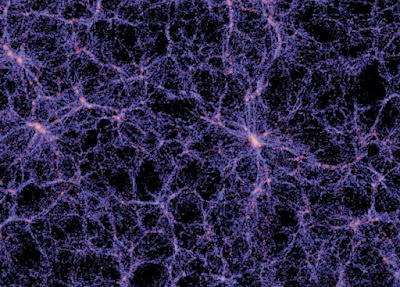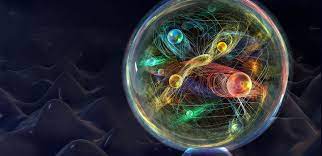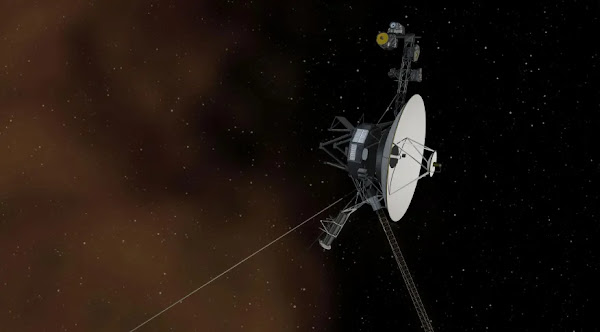Destaques
- Gerar link
- X
- Outros aplicativos
The cosmic web
The cosmic web is thought to have formed through the process of structure formation, which is the process by which small fluctuations in the density of matter in the early universe grew over time to form the large-scale structures that we see today. The process of structure formation is driven by gravity, which causes matter to clump together and form dense regions, such as galaxy clusters and superclusters.
One of the key features of the cosmic web is the presence of dark matter, which is a mysterious and unseen form of matter that makes up approximately 85% of the total matter in the universe. Dark matter is thought to be responsible for the formation of the cosmic web, as it provides the extra gravitational pull that is needed to form the large-scale structures that we see today.
The cosmic web is also thought to be composed of vast amounts of gas, in the form of hydrogen and helium, which is found in the filaments that connect galaxy clusters and superclusters. This gas is thought to be the fuel for the formation of new stars and galaxies, and it is also thought to be responsible for the formation of many of the features that we see in the universe, such as quasars and active galactic nuclei.
The study of the cosmic web is important as it helps us to understand the large-scale structure of the universe and the processes that have shaped it over time. It also helps us to understand the distribution of matter and energy in the universe, which is crucial for understanding the formation and evolution of galaxies and other astronomical objects.In summary, the cosmic web is a theoretical structure that describes the large-scale distribution of matter in the universe. It is made up of galaxy clusters and superclusters that are connected by vast cosmic filaments of dark matter and gas, which form a vast network that permeates the entire universe. The study of the cosmic web is important as it helps us to understand the large-scale structure of the universe and the processes that have shaped it over time.
- Gerar link
- X
- Outros aplicativos
Postagens mais visitadas
The Higgs Boson: Unveiling the Particle that Shaped the Universe
- Gerar link
- X
- Outros aplicativos
The Voyagers: Humanity's Enduring Messengers in Deep Space
- Gerar link
- X
- Outros aplicativos



Comentários
Postar um comentário